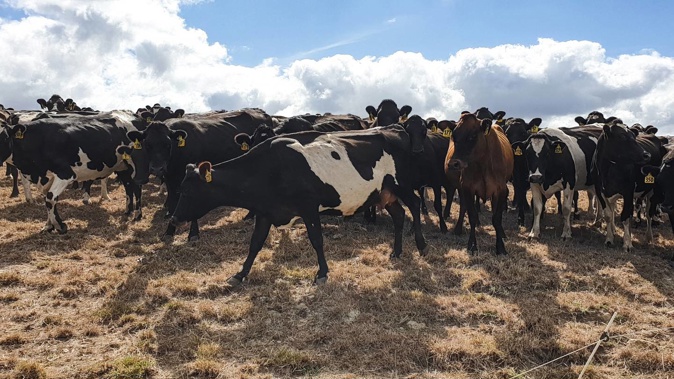
An area covering more than half of the North Island would need to be in pine plantation forests by 2050 to meet the minimum climate change target for agriculture, a report has found.
To achieve that, nearly 200,000 hectares would need to be planted annually - roughly double the record annual planting rate.
Parliamentary Commissioner for the Environment Simon Upton said the 5.8 million ha required meant it was "unlikely to be compatible" for other sectors, including energy and transport, to rely on planting trees to meet their emissions reduction targets.
"We cannot simply plant our way out of this problem," Upton concluded his note, based on research commissioned into how pine plantations could be used to offset the country's methane emissions, which largely come from agricultural livestock including cows and sheep.
Upton said the research was not intended to provide recommendations but rather "to lay out what can and cannot be credibly claimed with respect to offsetting livestock methane".
In reaching net zero emissions by 2050, the Government has required gross methane emissions to be reduced by between 24 and 47 per cent, and 10 per cent by 2030, both relative to the 2017 level.
"Gross" refers to total emissions and does not account for offsetting for example through planting trees that soak up carbon dioxide. Including offsets is referred to as "net" reductions.
Conversely, the Government decided that forestry offsets could be counted towards the target for carbon dioxide (CO2) and other long-lived greenhouse gases, of net zero by 2050.
/cloudfront-ap-southeast-2.images.arcpublishing.com/nzme/SPWP7YQRBAKVLOSWIXBAJX72PY.jpg)
Parliamentary Commissioner for the Environment Simon Upton. Photo / Supplied
This was because trees and vegetation removed CO2 from the atmosphere and not methane.
Upton has previously questioned the logic behind these decisions and the focus on net reductions for CO2, including relying on the Emissions Trading Scheme, rather than setting gross reduction targets, calling it a "short-term fix for a long-term problem".
In 2019 he proposed separate trading systems for fossil and biological emissions - such as agricultural methane - to help tackle climate change.
Carbon dioxide hangs around in the atmosphere for a long time, roughly 300-1000 years, and has to be sequestered for that same period of time.
Relying on fast-growing species like pinus radiata, which grows for about 30 years, for the majority of carbon offsets is problematic as trees only sequester carbon when they are growing or remain in wood form such as in building materials or furniture, for example.
If the wood decomposes or burns the stored carbon is released and another tree is required. More trees are also required to soak up any new emissions from other sources.
In theory, forestry could also be used to offset methane.
Methane has a greater warming effect than CO2, but is shorter-lived, at about 25 years, and so is more closely aligned with the growing period of plantation forests.
Research, conducted by Dave Frame and Nathanael Melia of the New Zealand Climate Change Research Institute, wanted to find out how to identify how much pine forest would need to be planted to offset warming from methane emissions based on 2021 livestock levels.
They said their paper showed that the temperature effect of changing herd size could be closely matched by the cooling associated with a forest.
/cloudfront-ap-southeast-2.images.arcpublishing.com/nzme/NAI6CHYNALPOCTG55KMSUFELVU.jpg) Agricultural emissions make up about half of the country's total greenhouse gas emissions, the largest portion of which comes from dairy cows. Photo / Chris Tarpey
Agricultural emissions make up about half of the country's total greenhouse gas emissions, the largest portion of which comes from dairy cows. Photo / Chris Tarpey
A dairy farm, for example, would need on average about 0.63ha of pine trees planted per head.
The research found if gross emissions were reduced by 47 per cent by 2050 - the upper target - it would require 4.1m ha of new pine forest to be planted over the next 30 years to achieve the same temperature response as reducing gross emissions to zero.
If gross emissions were reduced by 24 per cent by 2050 - the minimum target - this would increase to 5.8m ha, or close to 200,000 ha planted per year.
For perspective, about 9m hectares is now used for pastoral farming and about 1.7m ha in production forest.
/cloudfront-ap-southeast-2.images.arcpublishing.com/nzme/ETYVXNKTQ4FLRKQZIYJIIAHVCA.jpg) Areas of New Zealand in forest would need to be dramatically increased to meet global warming targets. Photo / Paul Taylor
Areas of New Zealand in forest would need to be dramatically increased to meet global warming targets. Photo / Paul Taylor
The highest annual planting rate since records began was 98,000ha in 1998.
At a lower end, planting around 770,000ha of new pine plantation forest between now and 2050 would have a similar temperature effect as reducing gross methane emissions by a further 10 per cent.
"Reducing gross emissions of livestock methane to the greatest extent possible – in addition to reducing gross emissions of carbon dioxide and nitrous oxide – must be the top priority," Upton concluded.
"We cannot simply plant our way out of this problem, just as we can't plant our way out of burning fossil fuels.
"I remain of the view that reliance on forests to offset fossil carbon dioxide emissions should be reduced and there should be a target for gross carbon dioxide emissions."
The researchers said their findings could assist with developing a "warming-based approach" to climate policy, particularly around methane and forestry.
This could be used simply in on-farm management, where a single farm could offset its warming from livestock by planting and managing additional trees on the farm.
It could also be incorporated into a wider trading scheme.
Take your Radio, Podcasts and Music with you









